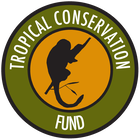A species is a fundamental unit of biological classification that consists of individuals with similar characteristics, capable of interbreeding and producing fertile offspring under natural conditions. The concept of a species is central to understanding and organizing the diversity of life on Earth. The biological definition of a species is often expressed as the ability to interbreed and produce viable, fertile offspring, known as the Biological Species Concept.
Here's why discovering new species is important:
Conservation
Here's why discovering new species is important:
Conservation
- Biodiversity: Each species represents a unique part of Earth's biodiversity. Discovering and documenting new species contributes to our understanding of the variety of life forms, which is crucial for maintaining a healthy and balanced ecosystem.
- Endemism: Many species are found only in specific regions or habitats, a phenomenon known as endemism. Discovering and conserving these endemic species is vital for preserving the biodiversity of particular ecosystems and preventing species loss.
- Conservation Priorities: Identifying and documenting new species helps conservationists prioritize areas for conservation efforts. Areas with high species diversity are often targeted for protection to safeguard unique and threatened species.
- Ecological Roles: Each species plays a specific role in its ecosystem, contributing to processes like nutrient cycling, pollination, and pest control. Understanding and conserving these roles is crucial for maintaining ecosystem health and function.
- Phylogenetics: Discovering new species contributes to our understanding of the Tree of Life and the evolutionary relationships among organisms. This information is essential for constructing accurate phylogenetic trees and understanding the evolutionary history of life on Earth.
- Adaptation: New species provide insights into the adaptive processes that lead to the development of unique traits and characteristics. Understanding these adaptations is essential for studying evolutionary mechanisms and processes.
- Genetic Diversity: Each species represents a reservoir of genetic diversity. Studying and preserving this diversity is critical for the long-term adaptation and survival of populations, especially in the face of environmental changes.
- Evolutionary Processes: The study of new species helps scientists investigate the mechanisms driving evolutionary processes, such as speciation, adaptation, and coevolution. This knowledge enhances our understanding of the dynamic nature of life's evolution.
